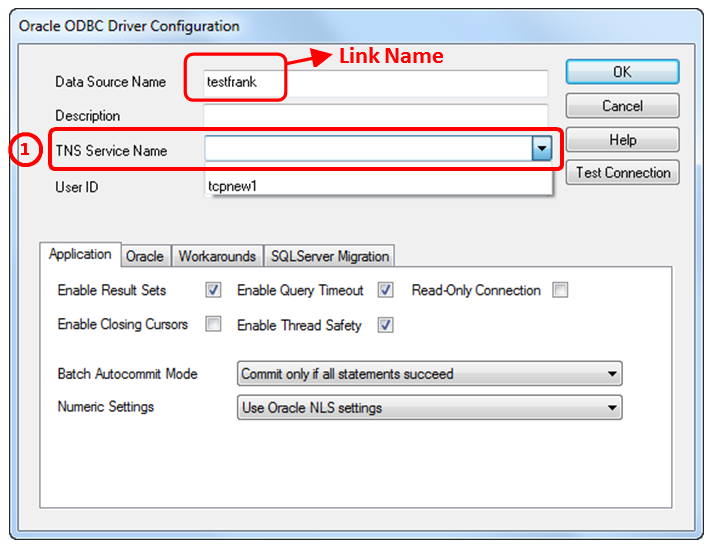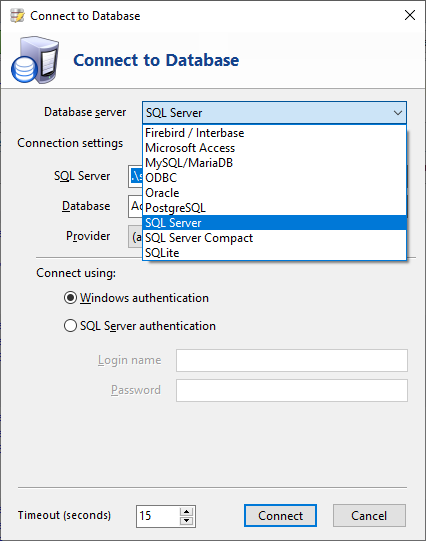
- #Accessing odbc in self contained html executable how to#
- #Accessing odbc in self contained html executable install#
- #Accessing odbc in self contained html executable drivers#
- #Accessing odbc in self contained html executable driver#
- #Accessing odbc in self contained html executable code#
#Accessing odbc in self contained html executable code#
Next question we had was how Executor process (and Driver) would be able to access the dependent libraries like numpy?Īfter googling a lot, we came across approaches where the python environments were copied next to the code running.
#Accessing odbc in self contained html executable drivers#
Once we had it updated on all nodes, we were good that PYSPAK_PYTHON would be available for both drivers and executors. This Spark2-env files are used to set required environment variables for Spark applications. Then from Ambari we set PYSPARK_PYTHON under spark2-env configuration file so that it is reflected on all the cluster nodes. We deployed python3 on dev cluster’s all nodes. But no, luckily we can deploy python3 on nodes and let spark know which python to use with PYSPARK_PYTHON environment variable. We were running Spark on older HDP cluster, this cluster nodes had python2 deployed already and that scared us if we are stuck with python2 for our development. Spark is distributed big data processing framework where there are drivers and executors.
#Accessing odbc in self contained html executable how to#
Once we had code that we wanted to test, we were to figure out how to run it on Spark. As this code would be run on executors in distributed manner. Using numpy inside map function on rdd was to test using numpy on executors.
#Accessing odbc in self contained html executable driver#
Using numpy in test.py to print the sum of array elements was to test if numpy is available at driver node, as for driver it is just plain simple python code. collect (): print ( 'SQRT ', sq ) print ( "Sum:", np. sqrt ( x )) #executor using numpyįor sq in sqrt. parallelize ( a ) import numpy as np #import numpy from pyspark.sql import SparkSession spark = SparkSession. Venv-pack #dev dependency only, ideally should not be included here.Īfter this we have our code in test.py and environment with dependencies zipped in a tar.gz file.įollowing was the simple pyspark code that we wanted to run.
#Accessing odbc in self contained html executable install#
$python3 -m venv testenv #create testenv environment $source testenv/bin/activate #activate env $python3 -m pip install -r requirements.txt #deploy required dependencies from requirements.txt in this env $python3 test.py # test code locally $venv -pack -o #package current env into tar.gz file We used following commands to create new environment, install dependencies and then pack the environment. To package, though we had to use venv-pack library to package the environments so that those could be shipped to wherever we need them for running. To create environments we decided to use venv as in recent python versions it comes bundled. Because environment was just another directory created in local project structure, we can just zip it up and use it in the spark cluster, as it already has python (soft link or a real copy) and the required dependencies. And that is what we had to use to separate our project’s environment from other local projects.īut luckily we can use environment to package it up as well. In python, we create different environments for different projects so that different projects can use different versions of dependent libraries. To solve this problem, we had to rely on environments.

We wanted to package the dependencies along with the code, and deploy them together the way we were deploying fat jar for Spark. jar as well in Python.īut when I started looking for them, I got to know there exists so many of the tools, not many of them are standard or are supported by specific python versions only.įor dependency management, it made sense to stick with standard tool like pip3 that comes with python, and with requirements.txt it made a little easier to manage reproducible dependencies.īut pip3 was deploying those dependencies under site_packages of python installation.

I assumed there would be a standard dependency management, packaging tool like Maven in Python world and a standard packaging format like.

Having worked on Java, Spark I was expecting similar workflow for how we would run the PySpark application on the cluster.

Being new to Python and PySpark, and had to test PySpark feasibility on old Hortanworks Data Platform (HDP) cluster, I had many questions.


 0 kommentar(er)
0 kommentar(er)
